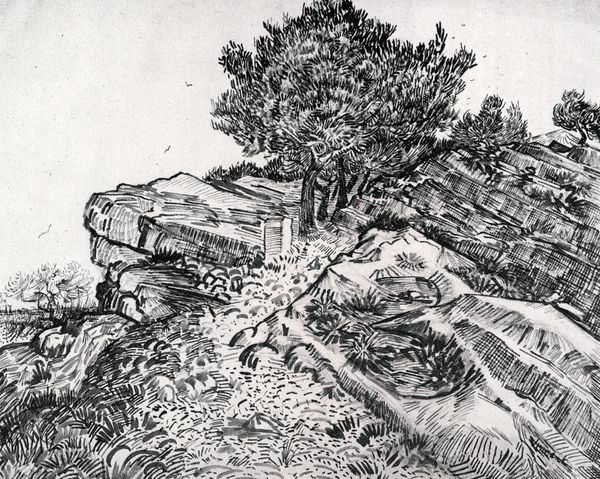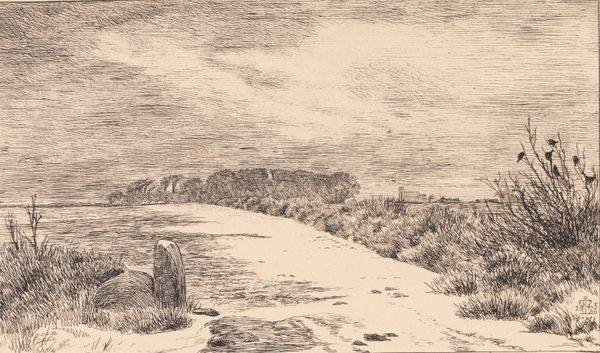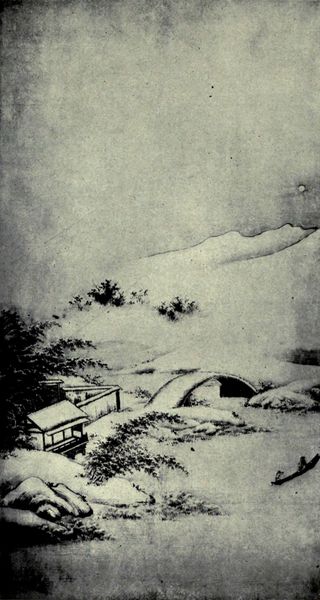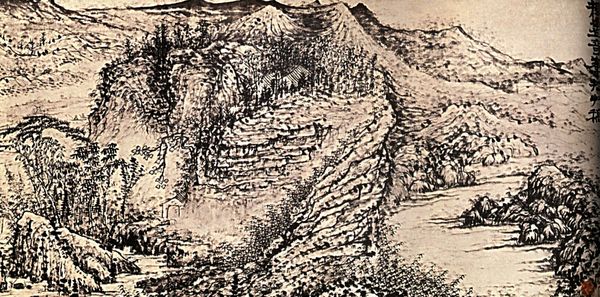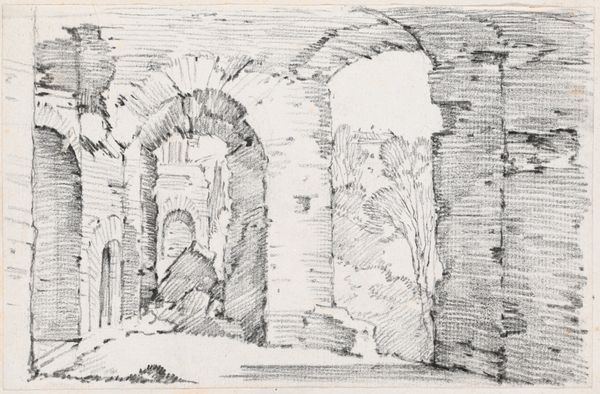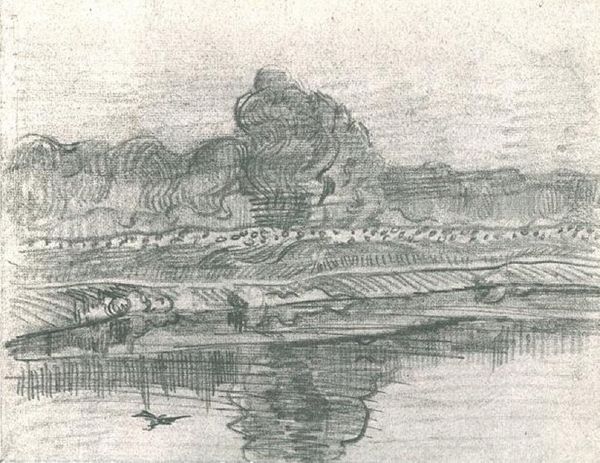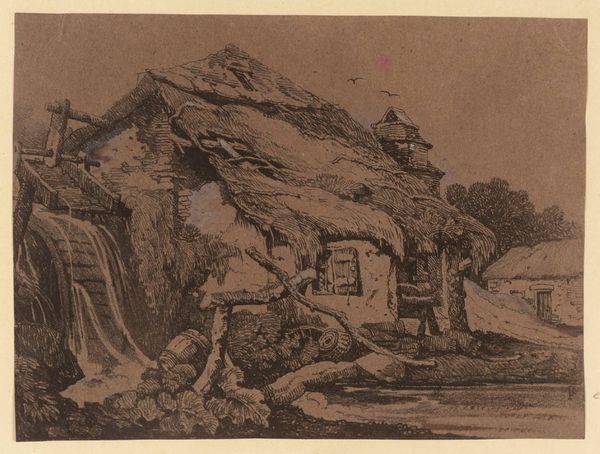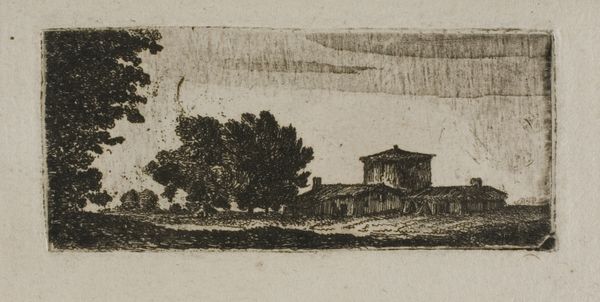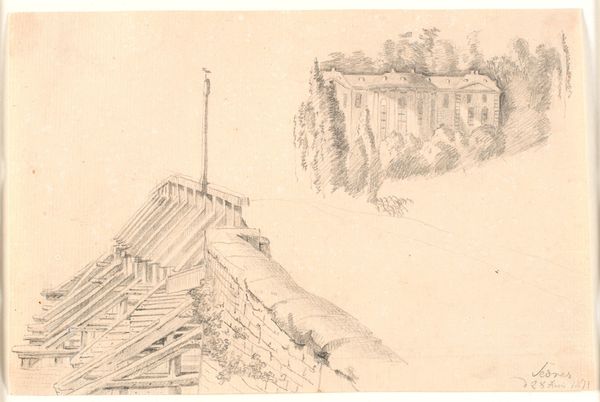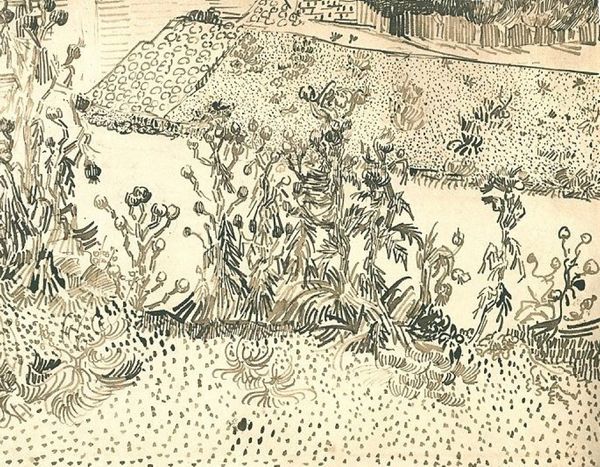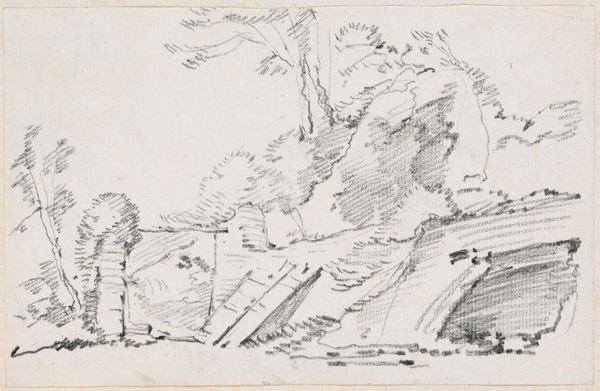
drawing, ink, woodblock-print
#
tree
#
drawing
#
asian-art
#
landscape
#
house
#
ink
#
rock
#
pencil drawing
#
woodblock-print
#
abstraction
#
line
Copyright: Public domain
Curator: Shitao's "Village on the Water," created around 1689, is a compelling example of his landscape drawings. It uses ink to bring this ethereal scene to life. What are your immediate thoughts? Editor: It has an unsettling calmness to it, like observing the quiet before a storm. The sharp lines that create the houses and rocks create a fascinating dialogue with the graded washes suggesting water. There is a certain harmony there, but the black ink dominates this pictorial landscape, doesn’t it? Curator: Indeed. Traditional Chinese landscapes, beyond their surface depiction, invite meditation on the relationship between humanity and nature. The village nestled among the rocks and water could represent a harmonious co-existence, the figures being small enough to respect the imposing landscape that is present. Editor: That's a fascinating interpretation. I'm captivated by Shitao’s strategic composition. The arrangement guides the viewer’s eyes. Look at how he has organized these strokes of ink: from the soft, blurred rocks on the left that give way to the crisp, sharply-defined edges of the architecture on the right. It gives an insight into his style and his technique. Curator: The deliberate use of black ink, I believe, symbolizes more than what is seen on the surface. In many Eastern traditions, the void, the empty space, is as significant as what is depicted. Black can represent the unknown, the potential from which all things arise, while also suggesting an acknowledgement of mortality. Editor: It definitely achieves a contemplative mood. This kind of restrained, stark landscape certainly demands consideration of our own positioning, doesn’t it? This kind of reflection into the symbolism of human relationship. The technique certainly gives off some emotional tension. Curator: Absolutely, it’s like a visual koan. These images and landscapes become embedded into our memories to become representative and a call back to specific imagery that becomes engrained into how cultures communicate to each other over centuries. Editor: Agreed. Well, that’s certainly left me with a lot to ponder about the landscape’s visual language and its intrinsic values, and maybe it invites further interpretation in due course.
Comments
No comments
Be the first to comment and join the conversation on the ultimate creative platform.
